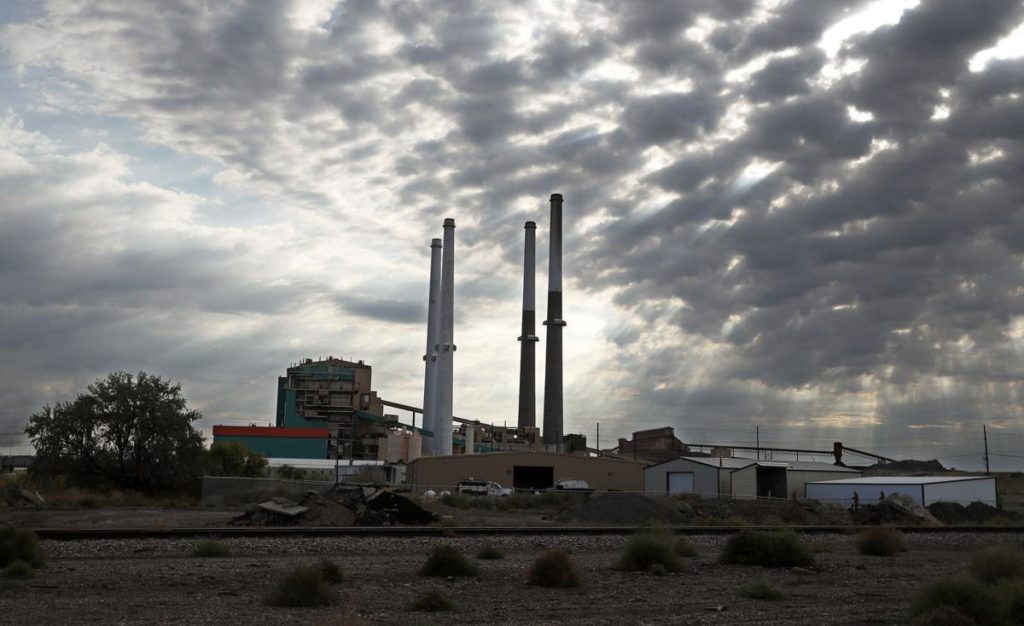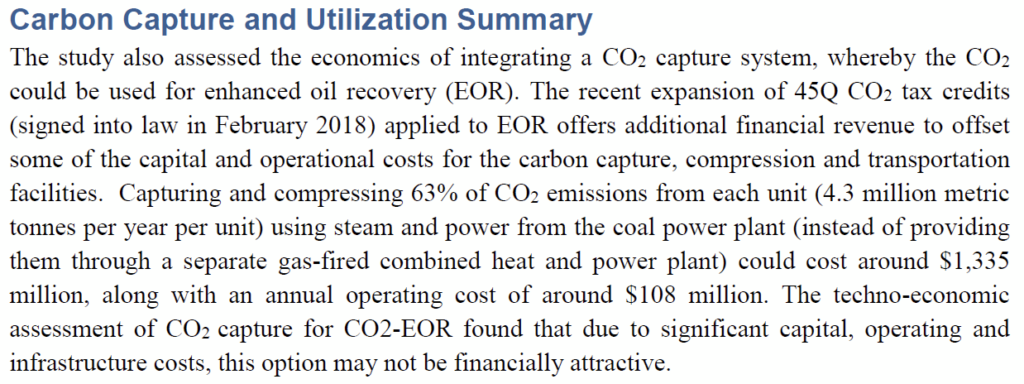Carbon capture & storage again?!?! JUST NO!
October 28th, 2020

Here’s a study from 2018 that I found in connection with a recent article about the controversy over the Colstrip coal plant and whether it will be rehabbed, whether it will continue to provide Idaho with some power after withdrawal from Washington state.
Idaho regulators have Colstrip concerns
Here’s the study:
Carbon Capture was to be considered in the plan for Colstrip rehab, but here’s the conclusion:

45Q CO2 tax credits? Get out the waders. From our “good friends” at Great Plains Institute, its Primer: Section 45Q Tax Credit for Carbon Capture Projects.

To implement the reformed 45Q, the US Treasury requested public comments in IRS Notice 2019-32 on several key issues. The IRS issued guidance on beginning and continuous construction requirements along with a revenue procedure for business partnerships that include investors claiming the tax credit. The IRS released proposed regulations to address additional implementation issues, including requirements for demonstrating secure geological storage, credit recapture, credit transferability and contractural assurance, and requirements for lifecycle analysis of emissions reductions for projects that beneficially use CO2 or CO to convert manufacture fuels, chemicals, or other useful products like cement.
https://www.betterenergy.org/blog/primer-section-45q-tax-credit-for-carbon-capture-projects/
Yes, Great Plains Institute has a big money-suck program AGAIN, pushing “carbon capture and storage/sequestration.”
Money suck? Yes, look at this from 2017 IRS 990, most recent I could find, but for sure there is more since:

Current Legalectric post, and going back… been there, done that, must we?
More Carbon Capture PR BS
February 21st, 2020
CO2 pipelines? It’s a red herring!
March 22nd, 2017
Do really need to go through this again? Apparently, because as Bill Grant, formerly Deputy Director of Commerce on the Energy side, and before that Izaak Walton League forever, said circa 2005 and coal gasification and CCS, “we need to find a way forward for coal.” We’ve been there, done that, and carbon capture is a pipedream:
And even though we knew it then, the science and economics were in the record, regulators and applications paid little attention until plant after plant was blocked, denied, and withdrawn. Then again, they got a LOT of money to promote coal gasification and carbon capture, but those of us without funding, without resources, kept at it, and prevailed.
IEDC gets carried away
February 15th, 2007
And here are the presentations from that fiasco, the shameful promotion of CCS contrary to science and economics:
Presentations at IEDC
February 16th, 2007
CO2 sequestration is so… like… not happening!
January 26th, 2007
Great Plains Institute – is Joyce getting their $$ worth?
January 18th, 2007

COAL?!?! What are they thinking?
June 29th, 2010
How much did the “Partners for Affordable Energy” pay for this? You can find them at www.powerofcoal.com and www.poweringourlives.com.
Here’s the revealing part, the very last paragraph:
The St.PPP picked up this “article” and yet omitted that closing truth:
Here’s the Bemidji Pioneer article:
Future energy needs still depend on coal
By: Brad Swenson, Bemidji Pioneer
About 50 percent of the nation’s electricity comes from coal, he said. “If not coal, then what? What’s going to make up that volume of fossil fuel?”
Read the rest of this entry »
More on Carbon Capture Pipedream
June 28th, 2010
Time to trot out the “Carbon Capture & Storage” red herring again(and check those teeth, how bizarre!). Yet another study out that shows that Carbon Capture ain’t happenin’ and we’d best be dealing with the problem and not pretending like CCS will save us.
Long-term Effectiveness and Consequences of Carbon Dioxide Sequestration – Shaffer
Bottom line:
The carbon sequestration pathway presented here posits great human effort in the next two hundred years but subsequent human inaction in the spirit of `out of sight, out of mind’. Alternatively, long-term leakage from the ocean or geological reservoirs could be actively countered by resequestration to stabilize climate at some desired level. However, there are serious concerns connected withthis. First, it would be difficult to gauge the global leakage rate that would have to be matched by the resequestration rate. Long-term monitoring of atmospheric CO2 concentrations would probably be the best way to address this but natural carbon-cycle fluctuations would complicate this approach. Second, resequestration would have to be carried out over many thousands of years, a burden for future society not unlike that of long-term management of nuclear waste. By greatly limiting carbon emissions in our time, we could reduce the need for massive CO2 sequestration and thus reduce unwanted consequences and burdens over many future generations from the leakage of sequestered CO2.
This came from a Yahoo News article:
Yahoo News June 27, 2010
Carbon storage faces leak dilemma — study
By Agence France Presse
PARIS (AFP) — Dreams of braking global warming by storing carbon emissions from power plants could be undermined by the risk of leakage, according to a study published on Sunday. [The study itself is available here: http://goo.gl/wygb
Rich countries have earmarked tens of billions of dollars of investment in carbon capture and storage (CCS), a technology that is still only at an experimental stage.
Read the rest of this entry »

